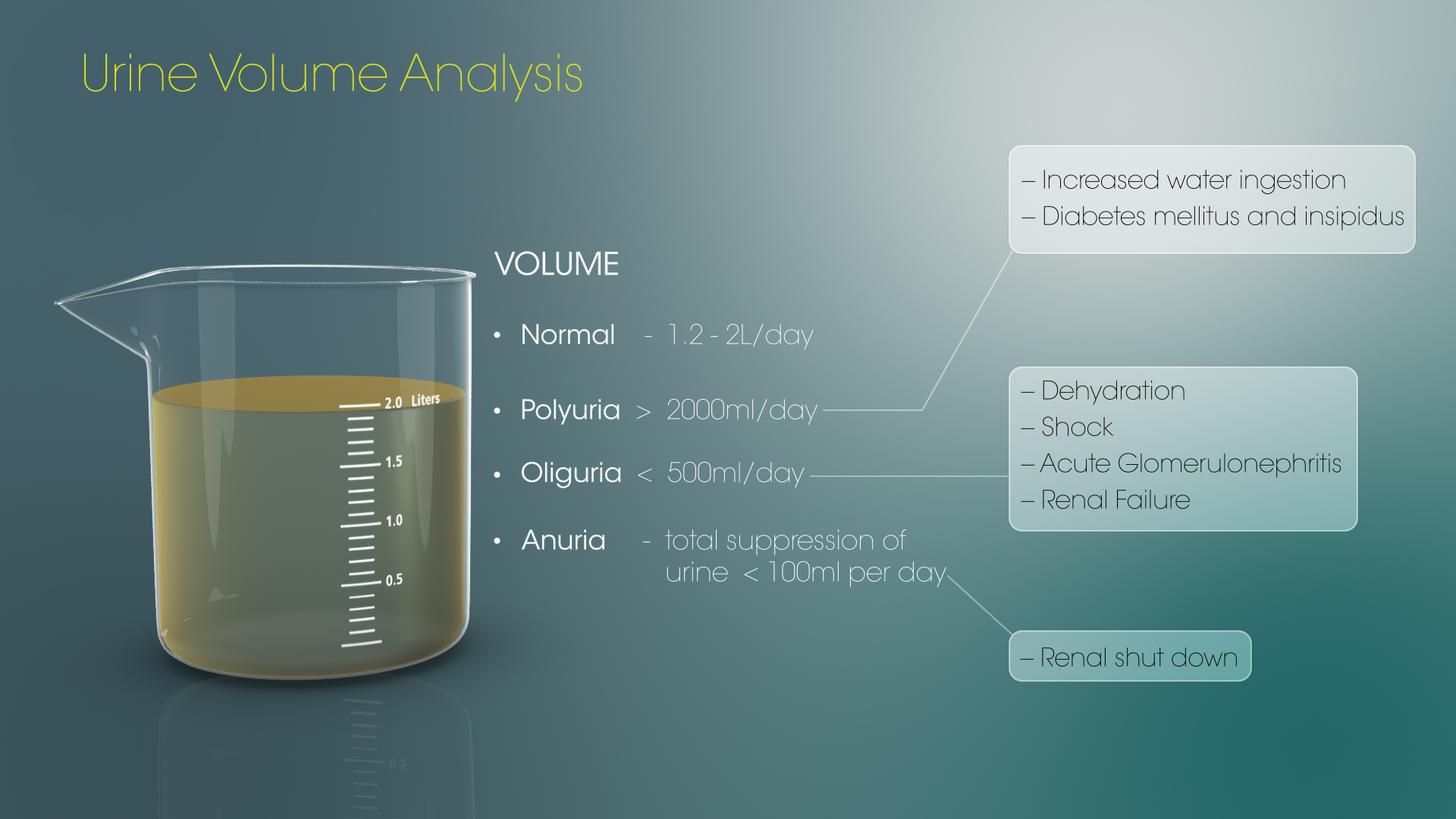what is urinalysis
Source:Bioway Time:2018-07-30
Urine Analysis
Written by on July 4, 2018
What is urine?
Urine is a liquid form of metabolic waste containing urea and other nitrogenous compounds, that are filtered out from the blood. It is stored in the urinary bladder and is excreted from the body through an opening called urethra.
How is urine formed?
Process of blood filtration in the kidneys
The functional unit of a kidney, called a nephron, consists of a glomerulus, which is the site of blood filtration. The glomerulus is a dense mesh of blood capillaries surrounded by a cuplike structure called the Bowman’s capsule. Water and solutes are pushed out from the blood capillaries into the capsule through a filtration membrane.
The filtrate is then pushed through the renal tubule that allows water and small solutes to pass but blocks blood cells and large proteins. Reabsorption occurs, i.e, useful solutes such as essential ions, glucose, amino acids, and smaller proteins are extracted out from the filtrate and sent back to the blood.
Hydrogen ions along with other waste ions are secreted out from the blood capillaries into the renal tubule. The secreted ions combine with the filtrate and complete the process of urine formation. Excess water is removed from the urine and returned to the blood, leaving behind a concentrated liquid waste.
The urine flows out of the nephron tubule into a collecting duct. It passes out of the kidney, into the ureters, and collects in the urinary bladder.
Urinalysis and its importance
Urinalysis or biochemical analysis of urine is used as a primary indicator of health. It gives an idea of general health, as well as the presence of specific medical conditions including levels of glucose and ketone bodies in the urine.
In a urinalysis, the urine sample is evaluated in 3 ways:
Visual or physical exam, dipstick or chemical test and microscopic exam.
Physical examination
Color and Appearance
Normal urine is typically a transparent, clear liquid. Sometimes the urine may appear turbid due to the presence of mucous, sperm and prostatic fluid, skin cells, or contaminants like body lotions and powders. However, cloudiness may also indicate an infection. Presence of blood may make it appear reddish brown.

Odor
Volume
A mild smell is common in urine. Often an unusually strong foul odor may be due to intake of certain foods or medications that are acidic in nature.
Normal volume in a day ranges from 750 –2000 ml. Less than that is a sign of oliguria and may happen because of dehydration, infection, obstruction, renal stones, kidney failure or other factors. Over 2000 ml production in a span of 24 hours is a condition called polyuria, that may arise as a consequence of diabetes insipidus, hypertension, nephrotic syndrome, ingestion of alcohol or drugs, endocrine disorders. Complete absence of urine or anuria may occur due to obstruction, kidney failure, or stenosis.

Osmolality
Concentration
Determining the osmolality gives an accurate concentration of dissolved substances in the urine. The normal osmolality of 24 hours urine specimen varies from 500 - 800m,osmol/kg.
A measure of concentration (or specific gravity), gives an idea whether the person is imbibing enough fluids or is dehydrated.
Dipstick Test is a chemical analysis of urine that uses reagent strips that change color on exposure to certain constituents present in abnormal levels. It usually checks for:
pH
Protein
Sugar
Ketones and Nitrites
Bilirubin
Blood
Urine with a pH level below 7 is acidic, while above 7 is alkaline. Normally the pH of urine should lie between 5.5 to 8. The level of acidity or alkalinity is indicative of abnormalities like kidney or urinary tract disorder.
Low levels of protein in urine are normal. False negatives can occur in alkaline or dilute urine or when primary protein is not albumin. However, larger amounts of proteins may indicate renal disease.
Normally the glucose content in urine is too low to be detected. Glycosuria or presence of detectable amount of glucose calls for follow-up testing for diabetes.
Presence of ketones in the excreta indicates incomplete fat metabolism. As with sugar, any amount of ketones detected in the urine could be a sign of diabetes that requires follow-up testing. Nitrite is formed when bacteria converts urinary nitrate to nitrite. They may be a sign of urinary tract infection.
Bilirubin is released after the destruction of red blood cells. Normal urine has no bilirubin content as it is passes into the liver and becomes part of bile. Presence of bilirubin in urine may indicate liver disease, bile duct obstruction or hepatitis.
Sometimes, false positive results may come out due to contamination with menstrual blood. However, blood in your urine requires additional testing for infection, kidney damage, or blood disorders.
Microscopic exam
Drops of urine are viewed under a microscope to detect:
White blood cells or leukocytes
Red blood cells or erythrocytes
Presence of leukocytes in urine is usually a sign of infection. This is detected by checking the leukocyte esterase activity.
Presence of erythrocytes in urine may be a sign of kidney disease, a blood disorder or bladder cancer.
Other molecular analyses for urine can be used to find the following:
Occurence of bacteria or yeasts may indicate an infection.
Tubular cast proteins may form in the urine as a result of kidney disorders.
Chemical-induced crystal formation in urine may be a sign of kidney stones.
Urine Analysis is an important diagnostic tool that can be used to better understand various medical situations that are occurring throughout the body.
